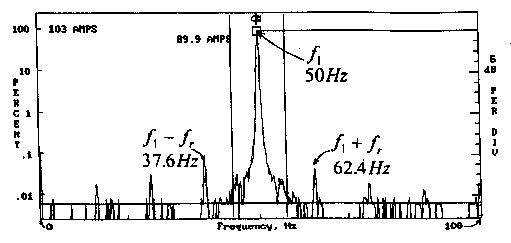A Review of On-Line Condition Monitoring techniques for Three-Phase Squirrel-Cage Induction motors-Past, Present and Future
W.T.Thomson, Senior member, IEEEThe Robert Gordon University, Schoolhill, Aberdeen, Scotland
Published: July, 01 2002
Abstract
The main objective of this review is to provide industry with state of the art knowledge on condition monitoring strategies for assessing the operational health of induction motor drive systems. An overview of typical failure mechanisms and their causes is presented. the essential criteria for reliable condition monitoring system are discussed and the theoretical principles behind the generation of unique signal characteristics, which are indicative of failure mechanisms, are presented. On-Line monitoring techniques which can be used to diagnose mechanical problems, stator and rotor winding failure mechanisms, and airgap eccentricity are described. the focus is on vibration, current, flux and partial discharge monitoring strategies. the application of monitoring systems in industry is reviewed and reference is made to on-site case histories. Recent developments, including the use of monitoring and analysis of electric current to diagnose mechanical problems is discussed. Future requirements for monitoring and diagnosing faults and fundamental causes in modern induction motor drives are presented.
Introduction
The Operators of electrics drive systems are under continual pressure to reduce maintenance costs and prevent unscheduled downtimes, which result in lost production and financial income. many operators now use on-condition based maintenance schemes. this has reduced unexpected failures, increased the time between planned shutdowns for standard maintenance and reduced operational-costs.
The operation of electrical machines in an unsafe condition can also be avoided. Since the incidence of unexpected failures is reduced the operator is able to exercise grater control in the prevention of incidents which may have environmentally damaging consequences. in hazardous installations, this requires continuous on-line monitoring to prevent a catastrophic failure.
During the past fifteen years there has been a substantial amount of research into the creation of new condition monitoring techniques for induction motor drives. New methods have been developed which are now being used by the operators and research is continuing with the development of new and alternative on-line diagnostic techniques. However, it is still the operators who have to make the selection of the most appropriate and effective monitoring systems to suit their particular induction motor drive systems. Due to the variety of diagnostic techniques now available this is not an easy task and this review aims to provide the user with up to date knowledge on monitoring and diagnostic systems for induction motor drives.

Fig 1: Current Spectrum for a 1.45MW, SCIM with abnormally high (35%) airgap eccentricity.





